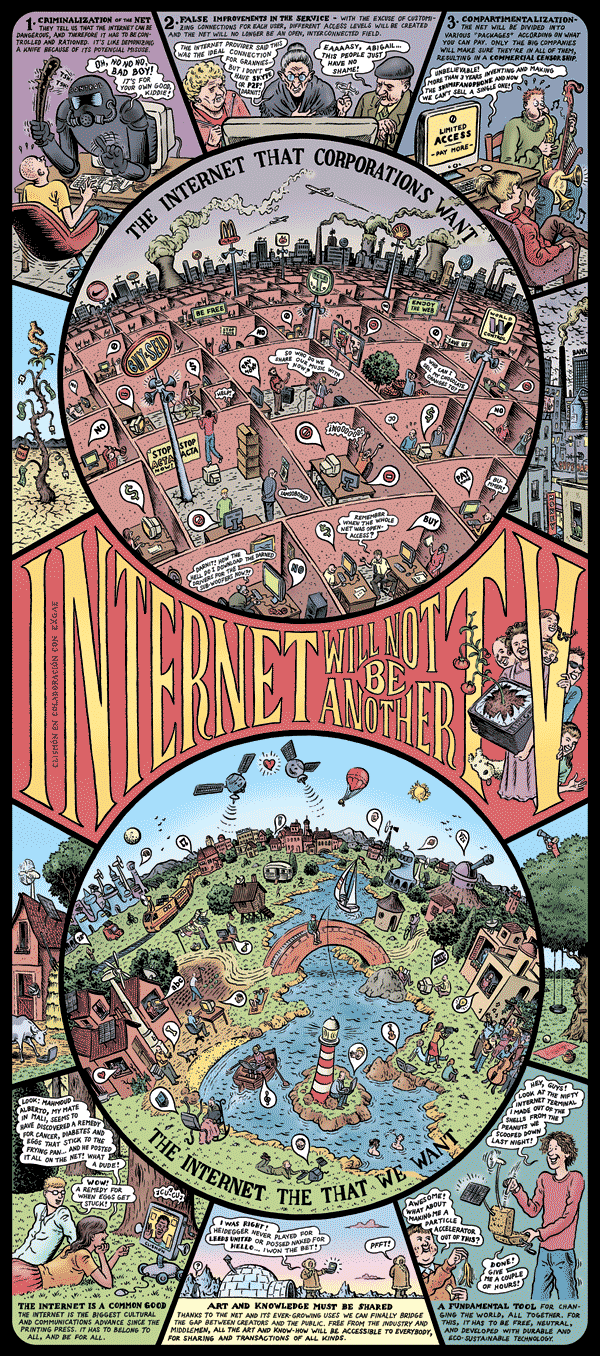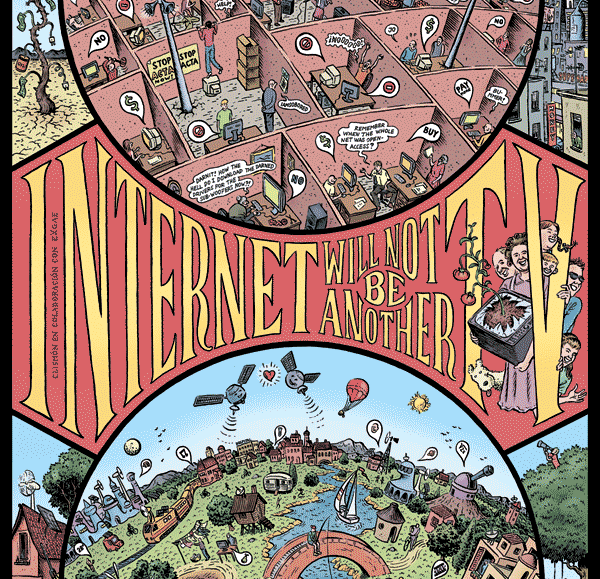
When a federal appeals court struck down on Tuesday an Federal Communications Committee ruling meant to prevent Internet service providers from prioritizing some website traffic over others, it was seen as a blow to the so-called “open Internet” and proponents of net neutrality.
The FCC put its net neutrality rules in place in 201o in order to ensure equal access to all types of content. But a federal court ruled Tuesday that the commission didn’t have the legal authority to enforce its own policy.
The threat to net neutrality has spurred grassroots efforts at whipping up awareness of the importance of keeping the Internet free of the type of restrictions that are possible without enshrining net neutrality as part of the law.
This graphic comes from Internet NO será otra TV (INTERNET WILL NOT BE ANOTHER TV) by artist Miguel Brieva. The drawing, evoking R. Crumb’s best work, is clearly pro-net-neutrality, contrasting the two potential outcomes of the issue — a dystopian police state at the top standing in stark contrast to a more idyllic world at the bottom, where “the Internet is a common good.”
This low-tech infographic was created by German data visualizer Anna Lena Schiller. Its stream-of-consciousness riff about net neutrality outlines how an open Internet fosters creative freedom.

Maybe you didn’t know that the idea of net neutrality was popularized by Columbia Law School professor Tim Wu, or that some large brands like Microsoft, Ebay and Amazon are actually in favor of it. Onlineschools.org is here to help. The organization also deserves bonus points for citing sources at the bottom of the graphic and explaining rationally why someone might be opposed net neutrality.
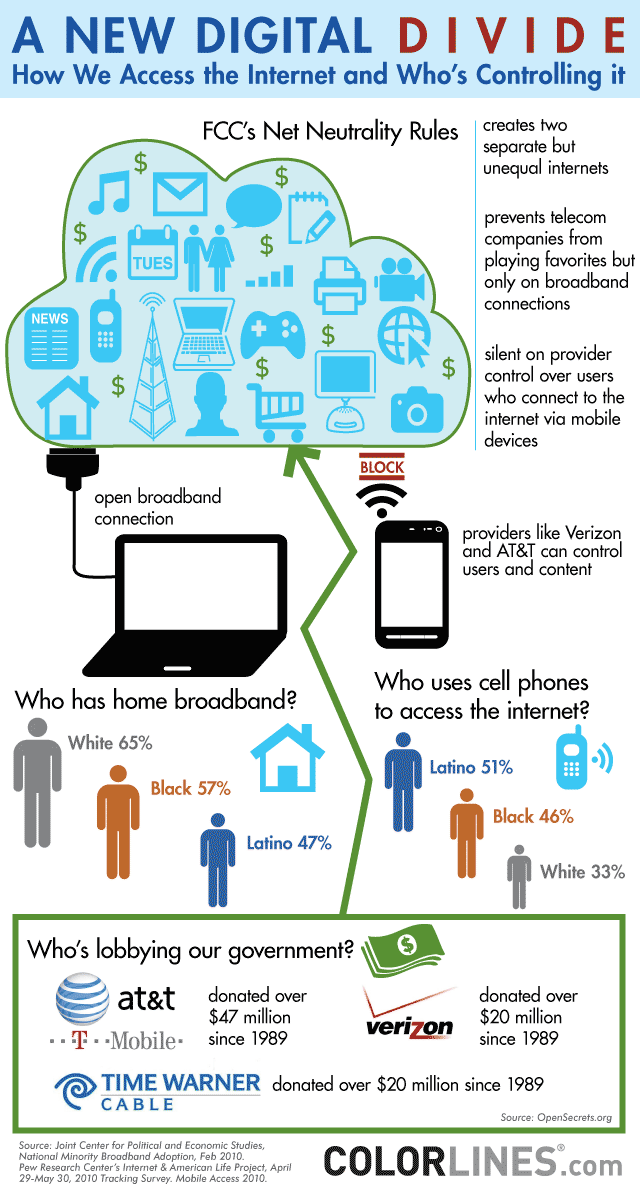
This infographic from Colorlines, a magazine that covers issues pertaining to race and culture, delves into how mobile and desktop Internet audiences differ — and how neutrality disproportionately affects different communities.

This infographic is actually from 2009. It was created by a redditor named quink who wanted to show sardonically what a cost structure might look like if we happen to lose net neutrality.
More in Media
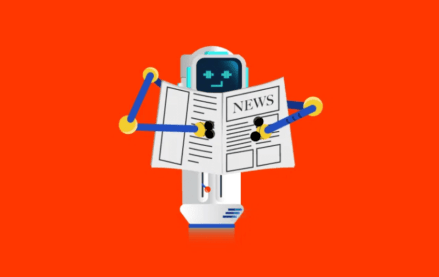
Media Briefing: ‘Cloudflare is locking the door’: Publishers celebrate victory against AI bot crawlers
After years of miserably watching their content get ransacked for free by millions of unidentified AI bot crawlers, publishers were finally thrown a viable lifeline.

Vogue faces new headwinds as Anna Wintour — who agency execs say made ad dollars flow — shifts focus
Anna Wintour’s successor at Vogue will have to overcome the myriad of challenges facing fashion media and the digital publishing ecosystem.
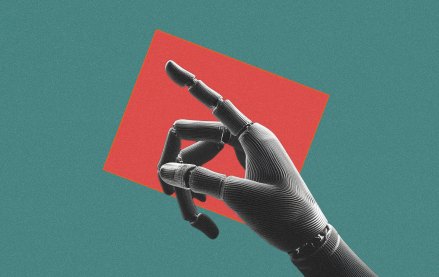
Here are the biggest misconceptions about AI content scraping
An increase in bots scraping content from publishers’ sites represents a huge threat to their businesses. But scraping for AI training and scraping for real-time outputs present different challenges and opportunities.
